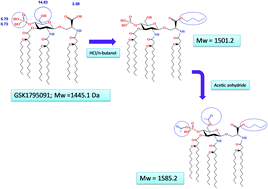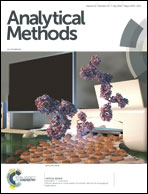Development of an ultra-sensitive assay for the determination of an aminoalkyl glucosaminide 4-phosphate, GSK1795091, in plasma to support a first time in human study
Abstract
GSK1795091 (or CRX-601), an aminoalkyl glucosaminide 4-phosphate, is a potent TLR4 agonist in clinical development for the treatment of cancer. Bioanalysis of GSK1795091 is challenging as extremely low doses (<1 μg) are administered in clinical settings, requiring an assay with a quantitation limit of 2 pg mL−1 or below. Other challenges associated with the bioanalysis of GSK1795091 include carryover and nonspecific binding issues. Due to these compound characteristics and the lack of precedence, extensive method development was performed to address these challenges. A novel extraction protocol was developed that included sample clean up with an Ostro™ pass-through sample preparation plate and a double chemical derivatization approach targeting hydrophilic functional moieties. The method was validated over the concentration range of 2 to 100 pg mL−1 and employed to determine the exposure of GSK1795091 in a first time in human clinical study. Incurred sample reanalysis was also included and the results agreed with those of the original analysis. The method was found to be precise, accurate and robust, and the low LOQ was critical to adequately support clinical PK assessments.



 Please wait while we load your content...
Please wait while we load your content...